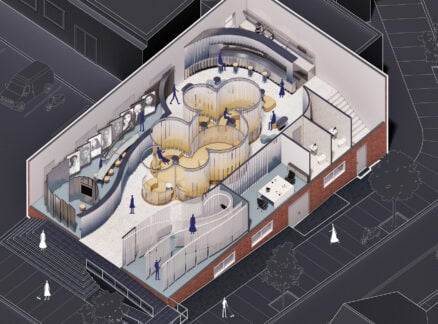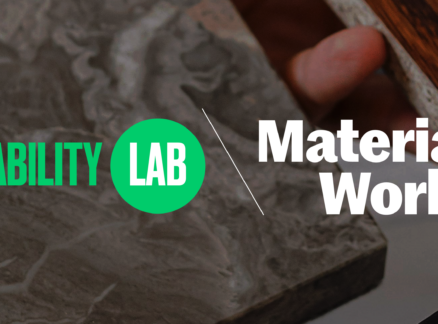January 1, 2004
Dancing Columns
The University of Arizona’s new dance building captures the essence of movement.
Dance may be the most ephemeral of performing arts. Once a piece is over, it’s often hard to recall a favorite series of movements the way you might repeat a line of dialogue or hum a melody. So when the University of Arizona (UA) hired Gould Evans to build a new home for its dance department, the firm faced the challenge of embodying an intangible.
“When we sat down with the users, we knew that one of the key goals was to make this building about movement,” project architect Donna Barry says. “So they brought Labanotation to our attention—the idea that you can graphically depict movement.” Similar to a musical score, Labanotation—developed in the 1920s by Hungarian choreographer Rudolf von Laban—is a system of written symbols that records and describes dance performances. Mindful of dance education’s history, UA dance department head Jory Hancock suggested that the architects study Serenade, the first ballet that School of American Ballet founder George Balanchine created for his students. “The drawings are absolutely beautiful,” Barry says. “We thought, ‘Okay we don’t know how we’re going to use it yet, but we’re intrigued with it.’”
The answer came soon enough. Gould Evans conceived the Stevie Eller Dance Theatre as a public face for the department. It combines a performance space with practice rooms, including a prominent glass-walled studio that gives passersby a glimpse into classes and rehearsals. “We had this studio on the second floor above the exterior lobby, and we knew we had to have columns [to support it], but we didn’t want them to be static,” Barry says. “We wanted to have columns that were out of step from each other, not on a grid, to simulate the idea of movement.”
The seemingly random placement of the columns evolved from the Labanotation of Serenade. “We took the beginning and ending positions of each one of the movements—the position right before the curtain goes up—and we overlaid them and created our own matrix,” Barry explains. “Then that matrix also became a generator for the location of the lighting in the floor and ceiling.” The conceit even extends to the design of the theater’s restrooms: small mirrors set into the ceramic tile are arranged in Labanotation. “Over the sink there might be, written with these mirrors, ‘Move forward, hands extended, twist faucet,’” she says.
To further emphasize the performative aspect of the building, Gould Evans wrapped the eastern side in a fabric of rusted wire. Like an onstage scrim, it functions as both screen and backdrop. “When the lights are on in the dance studio, you can see through it,” Barry says, “but when you shine lights on the outside, it becomes opaque.” At the theater’s opening in October, stage lights in the shape of stars shone onto the building like images on a theatrical cyclorama. “They used it as it was intended,” Barry says, “as sort of a billboard announcing that there’s a performance going on.”
The Stevie Eller Dance Theatre’s next gala event will be a performance of Serenade in early 2004, coinciding with the centenary of Balanchine’s birth. UA students have had the experience of living and working inside Serenade; now they will dance it. Much like the Labanotation that will help them learn the piece, the design of the theater has captured an ephemeral art in a lasting format.





